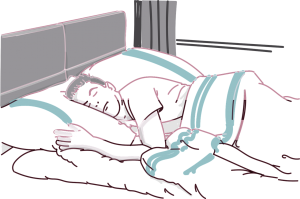Managing Social Media Distractions
Do social media distractions affect your productivity?
Social media use can drain your productive time — and it can be addictive. Every time you check social media, it reinforces the neural pathways in the brain that crave this distraction. As a result, checking your device for the latest post can become a habitual behavior. If you’d like to break the habit of social media distractions, here are some tips to get you started.
First, realize that urges are part of the human experience. Everyone has STUFF — the Stories, Thoughts, Urges, Frustrations and Feelings that cycle in the mind. But just because you experience an urge, doesn’t mean that you have to immediately answer its call. This is where awareness comes in.
Often people act upon their STUFF unconsciously. So, the second step in breaking this habit is to notice your urge to check social media. Perhaps you could keep a tally in the notes section of your phone, indicating each time you check social media. Or perhaps you could stand up when checking social media, if you’re typically sitting down. Most importantly, try to do something different, so your habitual behavior isn’t automatic.
Next, add space between your urge and your response. Let’s say you check social media every half hour. Try to gradually increase the times you check your device, until you’re checking on a manageable schedule — such as the morning before work, lunchtime and the evening after work.
And finally, notice your experience. Rather than forcefully pushing the urge away, become aware of what it’s like to take charge of your urges. Are you experiencing agitation in your mind? Tightness in your body? Again, awareness is key. As the old saying goes, “If you can name it, you can tame it.”
If you like this post, please consider sharing it — as long as sharing isn’t a social media distraction that affects your productivity!




